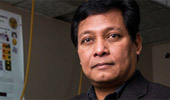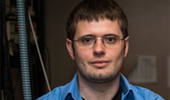“Two good things that are better together: STM combined with X-ray synchrotron microscopy,” says a report by the Argonne National Laboratory at phys.org.
(Phys.org) —Over the past three decades, scanning tunneling microscopy (STM) has rapidly become a major component of the condensed matter physics toolbox. While STM can provide vast quantities of data about the electronic, structural, and magnetic properties of materials at atomic resolution, its Achilles heel is its inability to characterize elemental species. But a team from Argonne National Laboratory and Ohio University has found a way around this limitation by combining STM with the spectroscopic versatility of synchrotron x-rays, achieving chemical fingerprinting of individual nickel clusters on a copper surface at a resolution of 2 nm, creating a powerful and versatile nanoscale imaging tool with exciting promise and potential for the materials and biological sciences. Their work was published in Nano Letters.
Read more at: http://phys.org/news/2014-11-good-stm-combined-x-ray-synchrotron.html#jCp
Two Ohio University Physics researchers are among the co-authors on the paper “Elemental Fingerprinting of Materials with Sensitivity at the Atomic Limit” in Nano Letters.
Dr. Saw-Wai Hla is Professor of Physics at Ohio University, and Heath Kersell is a doctoral student in Physics.
Abstract: By using synchrotron X-rays as a probe and a nanofabricated smart tip of a tunneling microscope as a detector, we have achieved chemical fingerprinting of individual nickel clusters on a Cu(111) surface at 2 nm lateral resolution, and at the ultimate single-atomic height sensitivity. Moreover, by varying the photon energy, we have succeeded to locally measure photoionization cross sections of just a single Ni nanocluster, which opens new exciting opportunities for chemical imaging of nanoscale materials.

















Comments